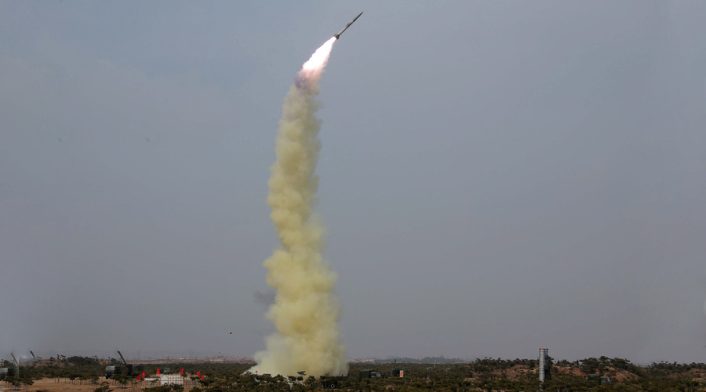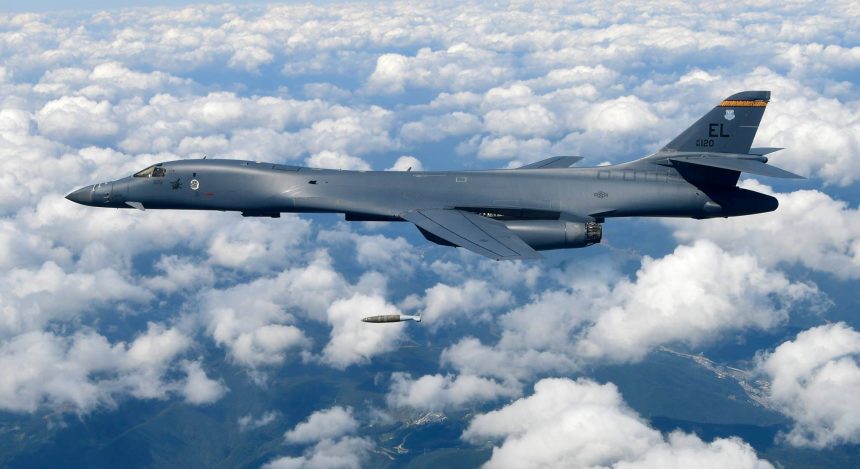Pyongyang could target planes even when they are not flying in North Korean airspace, North Korea’s Foreign Minister told reporters.
On Sept. 25, North Korea’s foreign minister Ri Yong Ho accused President Donald Trump of declaring war, saying that gives the regime the right to take countermeasures, including shooting down U.S. strategic bombers, even if they are not flying in North Korean airspace.
The new comment comes amid growing tensions and rhetoric between Pyongyang and Washington: on Saturday Sept. 23, hours after Kim Jong Un said that North Korea would soon test a hydrogen bomb over the Pacific, U.S. Air Force B-1B Lancer bombers from Guam, along with U.S. Air Force F-15C Eagle fighter escorts from Okinawa, Japan, flew in international airspace over waters east of North Korea, in what was the farthest north of the Demilitarized Zone (DMZ) any U.S. fighter or bomber aircraft have flown off North Korea’s coast in the 21st century.
Then, Trump said the North Korean regime “won’t be around much longer” if North Korea’s Foreign Minister “echoes thoughts” of dictator Kim Jong Un, referred to as “Little Rocket Man” by Trump:
Just heard Foreign Minister of North Korea speak at U.N. If he echoes thoughts of Little Rocket Man, they won’t be around much longer!
— Donald J. Trump (@realDonaldTrump) September 24, 2017
According to Ri Yong Ho, Trump’s comment was a declaration of war, that gives Pyongyang the right to shoot down U.S. bombers.
Whether North Korea would be able to shoot down a B-1 flying in international airspace or not is hard to say. The Lancers and their accompanying packages (that have also included stealthy U.S. Marine Corps F-35Bs) are theoretically very well defended and rely on the heavy electronic support provided by a large array of assets that continuously operate at safe distance from North Korea (or, in case of satellites, literally above it) to pinpoint Pyongyang forces, to collect signals required to update the enemy’s EOB (Electronic Order of Battle), and to keep an eye on all the regime’s moves.
However, North Korea’s philosophy of self-reliance, the use of road-mobile launchers, underground bunkers as well as hidden shelters could create some hassle even to the world’s most advanced air armada.
Considered the status of its geriatric Air Force, mainly made of Soviet-era aircraft, North Korea would only rely on Surface to Air Missile (SAM) batteries to attack a B-1, provided the bomber is well inside the missile engagement zone.
Indeed, North Korea operates a mix of Soviet SAMs, including the S-75 (NATO reporting name SA-2), S-125 (SA-3), S-200 (SA-5) and Kvadrat (SA-6), some of those not only are in good condition, but were probably upgraded locally. In addition to these systems, North Korea is also fielding an indigenous SAM system, dubbed KN-06 or Pongae-5, said to be equivalent to a Russian S-300P (SA-10) with a range of up to 150 km.

Although, individually, these systems can’t pose a significant threat to a modern strategic bomber flying off the North Korean coasts, combined and employed in a coordinated way by trained operators, they can be particularly tough to deal with, especially in case they are faced “head-on” by attackers intruding into the enemy airspace protected by many layers of mobile and fixed SAM batteries. However, should the need arise, U.S. forces would probably neutralize most (if not all) of the fixed batteries with long-range stand-off weapons before any attack plane enters the North Korean airspace.
By the way, this is not the first time Pyongyang threatens the B-1. A recent propaganda video showed, among the other things, the fake destruction of a Lancer bomber…









